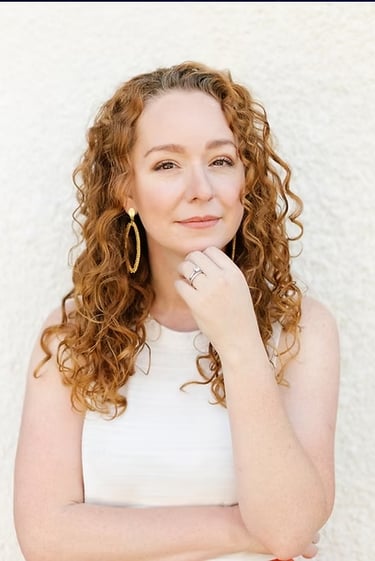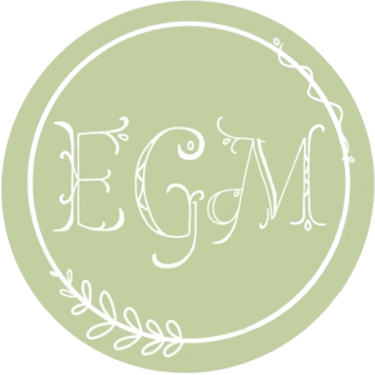Author Interview | Alison Robinson
I interviewed the author of Shadowless on topics such as writing trilogies, the importance of fantasy, and more!
INTERVIEWSFEATURED
Emma G. McKee
7/1/20259 min read
Hello dear reader, and welcome back to my blog! You may remember my last post where I reviewed YA fantasy novel Shadowless by Alison Robinson. Well, to my utter delight, I had the opportunity to interview her for the blog! I think you’ll find her answers to my questions very deep and thoughtful, and hopefully they’ll inspire you in your own writing! (As well as give you a taste of the writing style of her book, which again, I highly recommend!)
Emma: Hello Mrs. Alison! It is wonderful to have you on the blog! Could you give us an introduction to who you are as an author?
Alison: I see the work of an author as a kind of funnel—gathering all the facets of my life and distilling them into story. Professionally, my background is in both Theatre Arts and Counseling, which means I care deeply about character, emotion, and human complexity. Personally, I’m passionate about literature, art, and my Christian faith. I’m also a mom, a pastor’s wife, and an animal lover with a soft spot for anything beautiful and full of meaning.
All of these parts of me find their way into my writing. I aim to create stories that are fun, dramatic, and adventurous—but that also linger. I want readers to walk away entertained and thoughtful, asking deeper questions about the human soul, morality, and truth. And naturally, there are plenty of animals—because honestly, I wish I had a Shadow too (mine would be a crane or a tabby cat, depending on the day).
E: I have been inspired by so many books throughout my writing journey, now including Shadowless! Are there any books that inspired/motivated you to write the way you do?
A: Absolutely! Just as people say, “you are what you eat,” I believe our minds are formed by what we read. I’m intentional about the books I choose—always seeking stories that are beautiful and that lift my gaze toward what is good, noble, and true.
Many of the books that shaped me most deeply were ones I read in my teen years. The Count of Monte Cristo by Alexandre Dumas sparked my love for sweeping narratives told from multiple perspectives. Robin McKinley’s Spindle’s End and Rose Daughter, along with Juliet Marillier’s Daughter of the Forest and Wildwood Dancing, still haunt me with their rich emotion and lyrical imagery. Of course, like so many readers, the Harry Potter series made reading magical for me. I loved the sprawling cast, epic locations, layered magic system, and the unwavering charm and hope that carried all of us readers through even the darkest moments. I’m drawn to books that boldly declare, “Good and evil exist—and good must prevail.”
Finally, the nonfiction writings of C.S. Lewis, Dallas Willard, G.K. Chesterton, Jordan Peterson, and others have shaped my thinking about the human soul, divine truth about God, creation, and morality, and the invisible but weighty realities we all encounter daily. Those ideas anchor me—and they find their way into my stories, too.
E: How did you come up with the magical plot of Shadowless and all of its amazing subplots? How did you so expertly weave them together?
A: Shadowless came together the way I imagine any piece of art does—bit by bit. It began with a single character and a single question: Ghost. How do I get her where she needs to go? From that starting point, the cast slowly assembled: Rowena, Haaris, Roderick, Titus. Penalynn began as a minor character—a midwife who delivered Rowena—but she needed more agency. So I changed and elevated her role, and moved the scene of Rowena’s birth to a future book, reframing it as a flashback through Haaris’s perspective.
Once the cast was in place, I started building the Kingdom and its political structure. Interestingly, the magic system came much later. Originally, Shadows weren’t magical at all. But one night, just as I was falling asleep, I jolted upright like I’d been struck by lightning. I raced upstairs to my office and banged out the entire magic system in a single sitting: the four branches of magic, their rules, their limitations, and how they tied into the Kingdom’s structure. It remains the best moment of raw inspiration I’ve ever experienced in writing.
Everything since then has been the harder part—revision, layering, trial and error, and plenty of keyboard head-banging. Writing something complex means writing a lot that ends up getting cut. In fact, more of this story lives in my deleted scenes than in the final version. But that’s part of the process.
When you’re creating real characters, a full world, and a functioning magic system, the author has to know everything—even if the reader doesn’t. It’s like an iceberg: the reader sees only what’s above the surface, but they can feel the weight of everything beneath. That’s what makes it feel real. And over the course of the series, more of what’s hidden will come to light.
E: Do you have any tips for planning/outlining a trilogy? How do you keep all the subplots and character arcs straight?
A: As a reader, I want to trust that the author knows where they’re taking me. I think we all remember trilogies that fell apart by book three—where it became obvious the author didn’t know where the story was going. So from the start, it’s been important to me to write with the end in mind.
Each book in a trilogy needs its own contained story and resolution, while also building toward a greater arc. Every subplot and character should serve that central purpose. If a character or scene doesn’t move the story forward, it has to go. I actually cut three POV characters from Shadowless during revision because, in the end, they weren’t essential. They now live in the deleted scenes folder.
To keep everything organized, I structure my characters by hierarchy and point of view. Rowena and Penalynn are my protagonists—Rowena takes up more page time, but Penalynn has a full arc of her own. Taiosech and Bran are secondary POV characters, each with arcs that span the trilogy. I’ve mapped out where I want each character to start, where they need to go, and what internal changes they must undergo.
I use a detailed character worksheet—about 160 questions—for all my main characters. It covers everything from personality and beliefs to motivations and wounds. Secondary characters get a shorter version if they don’t have a POV. I also use tools like the Enneagram to help clarify personalities and character temperaments.
When writing, I treat the trilogy like a juggling act. Each character takes a turn, and the fun is in weaving them together—especially in scenes where their goals and personalities collide. In Book Two, all four POV characters travel together, which gives me more opportunity to explore their interplay in shared scenes.
I choose point-of-view based on who is most changed by the scene, who’s most impacted, or who offers the most compelling lens for that moment. I’m not just telling Rowena’s story—I’m telling one story, seen from multiple perspectives.
To stay on track, I keep a detailed scene-by-scene outline that notes whose POV is featured, what emotional or narrative beat is hit, and how that beat contributes to both the book and series-wide pacing. Pacing, to me, is everything—there should be rising and falling action within each chapter, within each book, and across the trilogy as a whole.
E: Why do you write in the fantasy genre? What do you love about it, and how can it aid a story?
A: I believe fantasy—and its technologically inclined twin, sci-fi—has a unique power to persuade. By removing the reader from the real world and placing them in an entirely different, otherworldly setting, fantasy strips away our assumptions, biases, and cultural baggage. It gives both writer and reader the freedom to explore real-world themes without the immediate weight or defensiveness that often surrounds them.
In a fantasy world, we’re more open. We can encounter hard questions—about morality, power, sacrifice, or the soul—from new and unexpected angles. We can see injustice more clearly, or goodness more vividly, simply because they’re framed in unfamiliar ways. Fantasy opens the imagination, and through that opening, deep truths can slip in.
As a Christian, I also believe fantasy echoes the Bible, the greatest stories ever told. When we create fantasy filled with sacrifice, redemption, and the battle between good and evil, we tap into deep spiritual truths. In this way, fantasy becomes a form of sub-creation—an imaginative reflection of the Creator’s own work. After all, God "spoke" creation into being, using words. We authors imitate God, whether we realize it or not.
E: Many writers debate between traditional publishing, self publishing, or hybrid. What made you decide to go with the hybrid publishing option, and would you recommend it for debut authors?
A: From the beginning, my dream was to pursue traditional publishing. After finishing Shadowless, I spent years working toward that goal—querying agents, attending conferences, and speaking directly with agents and editors, even at major publishing houses. In the process, I got a crash course in how the industry really works. Like Dorothy pulling back the curtain on Oz, all of my romantic notions about traditional publishing were dashed. I learned that—at its core—traditional publishing is first and foremost about one thing: profit. The art and content are secondary at best.
In 2020, two major things happened. The pandemic kept people at home, and many of them finally sat down to write that book they’d always dreamed about. Simultaneously, people read a lot more, stuck at home, so social media exploded with book content—BookTok and Bookstagram became massive forces, and indie authors found new platforms and audiences. Self-publishing lost much of its old stigma, and the sheer volume of books being produced changed everything. The industry is still trying to catch up.
When I pitched Shadowless, I often heard the same thing: “We love it! But we don’t know what to do with it.” Publishers told me they were looking for what's trending—darker themes, heavy romance, or riskier content. Shadowless didn’t fit the mold. It was “too different.” Some even suggested changing its tone to better suit the market. That was a turning point for me. I learned my book is good, worthy of traditional publishing, just not trendy. That's really good news for an artist! I had achieved my goal of producing a high-quality book.
Ultimately, I chose the hybrid path because I wanted to produce the best finished product I could, while keeping creative control over my work. I hired professionals—cover designer, editors, formatters—because readers deserve a book that looks and feels just as polished as anything from a major press. At the same time, I wasn’t willing to compromise on my values or my vision. This route allowed me control over what I put out into the world. That’s a heavy responsibility—but for me, it was worth it.
Would I recommend hybrid publishing for debut authors? Yes—if you’re prepared to take on the work and invest financially. Hybrid publishing isn’t a shortcut. It’s a different kind of stewardship and it’s a TON of work. I cannot express enough just how much work it is. Traditional publishing has an army of professionals for a reason. It takes so much work to get a book out. But, if you have a story that doesn’t fit the trends, if you want creative integrity, and if you're willing to hustle for your own success, then hybrid might be exactly the right choice. I recommend it over self-publishing. Writers rarely are good at everything. Hire the professionals to help fill in where you need it.
E: If you had the chance to do everything over again with Shadowless, is there anything you would do differently?
A: Absolutely. I wasted a lot of time—not because I didn’t care, but because I was paralyzed by fear. I was so afraid the story wouldn’t resonate with anyone, that all the hours I poured into it would be wasted. Writing is such a huge commitment, and I started later in life, with a newborn at home and so many other demands on my time. Sitting at the keyboard meant saying “no” to a lot of other things—even good things. That felt costly and I doubted myself daily.
Looking back, it was all worth it. Readers of all ages and backgrounds have connected with the story, the world, and the characters. The response has been deeply encouraging. Shadowless struck a chord, just as I’d hoped—but didn’t quite dare believe.
If I could do it over, I would spend less time frozen in fear. I’d trust myself more and allow myself to enjoy the process more. Fear stole so much time and joy that didn’t need to be lost. That’s something I try to hold onto now as I write the next books.
E: And lastly, what is one piece of advice you’d give to an aspiring young author?
A: Art is born where wisdom and heart collide. Nourish your heart and mind. Engage with beauty as often as you can through art, nature, cinema, poetry, literature, and more. But also read theology and philosophy. Listen to deep thinkers and wise, good people. Listen to good sermons. Writing isn’t just about plotting or prose—it’s about having something worth saying.
Then, study the craft. Writing is both art and skill. Skill can be learned—through books, courses, and workshops. My favorite craft book is Writing Your Story’s Theme by K.M. Weiland. I also highly recommend taking a writing course. I joined Jericho Writers and took Henry Bingham’s 6-week How to Write a Novel course—it was excellent and helped me level up my work in ways I couldn’t have done alone.
And there you have it! I think Mrs. Alison’s answers were incredible and very deeply thought-out. I hope they can aid you on your own writing journeys! Let me know in the comments what your favorite piece of advice was!
You can learn more about Alison and her books on her website, as well as purchase a direct-from-author signed edition of her book Shadowless (which I reviewed here!)
See you among the shelves,
Emma G. McKee


Leave a Comment!
Related Posts


Emma G. McKee
© 2025 Emma G. McKee
All rights reserved.
Credit for photos to Unsplash and Emma G. McKee unless otherwise stated.
Credit for background videos to Pexels.
